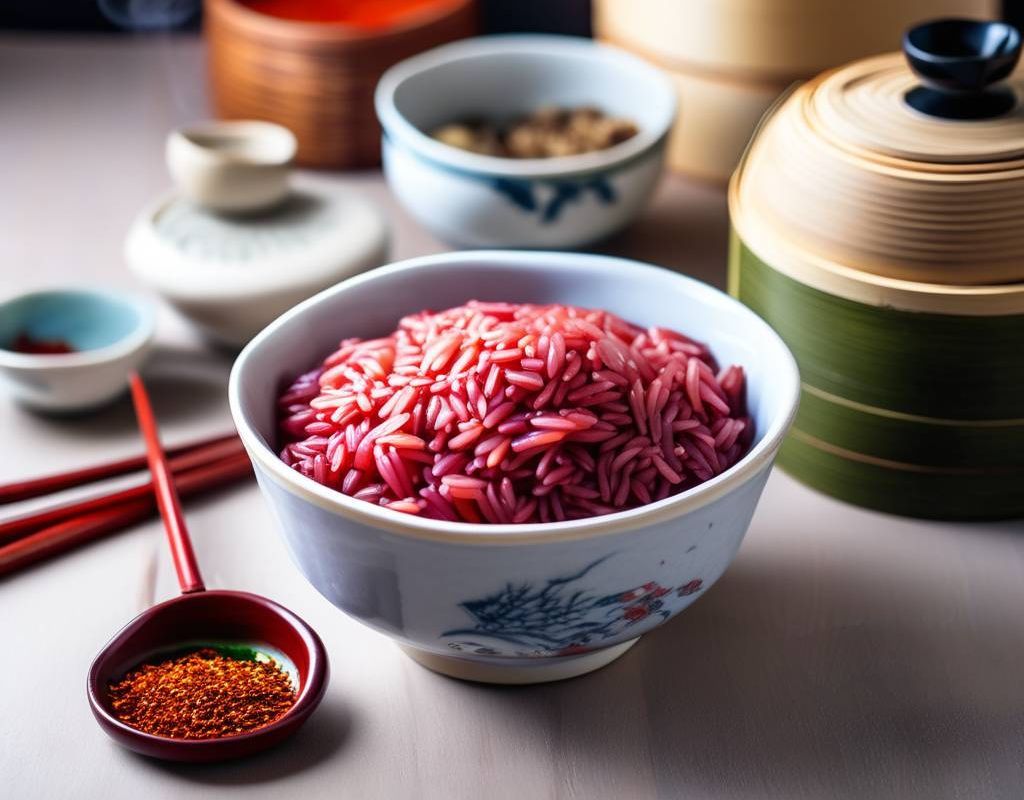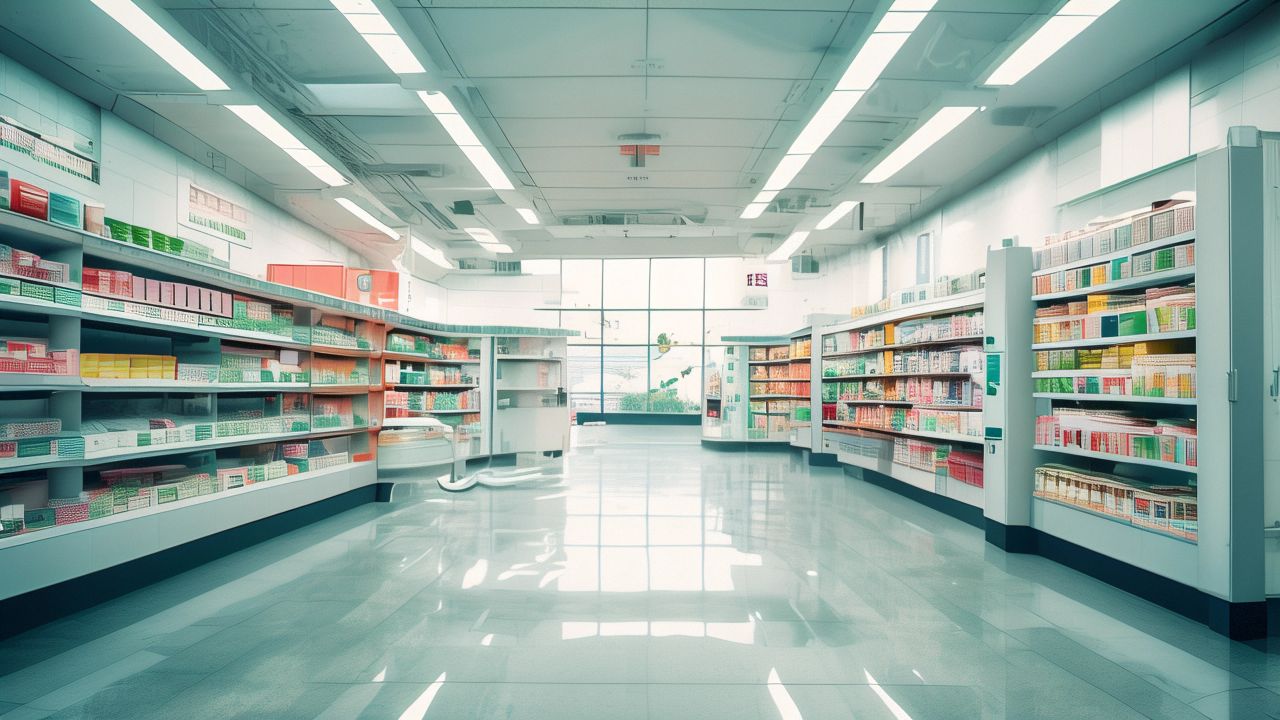One of the red yeast rice benefits: reducing blood lipids
What is red yeast rice?(One of the red yeast rice benefits)
Red yeast rice, also known as red rice yeast or ang-khak in some cultures, is a traditional Chinese culinary ingredient and food colorant that is made by fermenting rice with the red yeast strain of the mold Monascus purpureus. This process imparts a deep red color to the rice and also produces a number of compounds with potential health benefits, including monacolin K, which is structurally similar to the cholesterol-lowering drug lovastatin.
In traditional Chinese medicine, red yeast rice has been used to promote blood circulation and digestive health. Modern research has focused on its potential to lower cholesterol levels due to the presence of monacolin K and other monacolins, which inhibit the production of cholesterol in the body.
It’s important to note that while red yeast rice may be sold as a dietary supplement for its potential health benefits, the quality and purity of products can vary, and the concentration of active compounds may not be consistent. In some countries, red yeast rice supplements are regulated as medications due to their cholesterol-lowering effects, and they should be used under medical supervision, particularly if a person is already taking cholesterol-lowering drugs.

Red yeast rice benefits:
Red yeast rice is believed to offer several health benefits, primarily due to its content of monacolin K and other monacolins, which are naturally occurring statins. Statins are compounds that inhibit the enzyme HMG-CoA reductase, which is a key enzyme in the cholesterol synthesis pathway. Here are some of the potential effects and their mechanisms:
- Cholesterol Reduction (One of the red yeast rice benefits): The monacolins in red yeast rice are thought to be responsible for its cholesterol-lowering effects. Monacolin K, in particular, is structurally similar to the prescription statin lovastatin. By inhibiting HMG-CoA reductase, monacolins can help lower low-density lipoprotein (LDL) cholesterol, often referred to as “bad” cholesterol.
- Cardiovascular Health (One of the red yeast rice benefits): Lowering LDL cholesterol can reduce the risk of cardiovascular diseases, as high levels of LDL cholesterol are associated with the development of atherosclerosis (hardening of the arteries) and an increased risk of heart attacks and strokes.
- Antioxidant Properties (One of the red yeast rice benefits): Red yeast rice contains a variety of antioxidants, such as flavonoids and polyphenols, which can help neutralize free radicals and reduce oxidative stress in the body. Oxidative stress is implicated in various chronic diseases and the aging process.
- Anti-inflammatory Effects (One of the red yeast rice benefits): Some studies suggest that red yeast rice may have anti-inflammatory properties. Chronic inflammation is linked to many diseases, including heart disease, diabetes, and certain cancers.
- Immune System Support (One of the red yeast rice benefits): Traditional use of red yeast rice in Chinese medicine includes its application for boosting the immune system, although scientific evidence for this effect is limited.
- Digestive Health (One of the red yeast rice benefits): Red yeast rice has been used traditionally to aid in digestion and support gastrointestinal health.
It’s important to note that while red yeast rice has been used for centuries in traditional medicine and is supported by some modern research, the efficacy and safety of red yeast rice supplements can vary significantly. The concentration of monacolins and other compounds can differ between products, and there may be potential side effects, such as muscle pain or liver damage, particularly if taken in high doses or in combination with other cholesterol-lowering medications.
Therefore, if considering the use of red yeast rice for its potential health benefits, it is advisable to consult with a healthcare provider to ensure it is safe and appropriate, especially for individuals with existing health conditions or those currently taking prescription medications.
Research in Europe and America:
In Western countries, red yeast rice has been studied for its potential use in dyslipidemia, a condition characterized by abnormal levels of lipids in the blood. Studies have shown that red yeast rice can be efficacious and safe for short-term use in patients with dyslipidemia. It has also been studied in comparison with statins, showing noninferiority in reducing cholesterol levels and cardiovascular and hyperlipidemia risk. Because of these positive clinical effects, researchers have begun to study its use in other disease states.
Furthermore, research has been conducted on the use of red yeast rice in the maintenance and improvement of health in lipid metabolism and the circulatory system. This research often involves studying its characteristic ingredients and their effects on health. The monacolins present in red yeast rice, for instance, are known to inhibit the enzyme 3-hydroxy-3-methylglutaryl co-enzyme A (CoA) reductase, which is an essential step in cholesterol biosynthesis.
How to consume?
Red yeast rice can be consumed in various ways, both as a food and as a dietary supplement. Here are some common methods of consumption:
- As a Food Ingredient: In traditional Chinese cuisine, red yeast rice is used as a coloring agent and flavor enhancer. It can be cooked and served as a part of a meal, much like regular rice. It often adds a reddish hue and a slightly nutty flavor to dishes.
- In Supplement Form: Red yeast rice is also available as a supplement in capsule or tablet form. These supplements contain concentrated amounts of the active compounds found in red yeast rice and are typically taken for their potential health benefits, such as lowering cholesterol levels.
- As a Functional Food: Some products, like red yeast rice cooking oil or rice noodles, incorporate red yeast rice for its color and potential health benefits.
Where to purchase?
In the United States, red yeast rice can be purchased through several different channels:
- Health Food Stores and Supplement Retailers: Many health food stores and retailers that specialize in dietary supplements carry red yeast rice products. These stores often have knowledgeable staff who can provide information about the products they sell.
- Grocery Stores: Some larger grocery stores with a well-stocked health and wellness section may carry red yeast rice products, particularly if they have a focus on natural or organic foods.
- Online Marketplaces: Websites like Amazon, Walmart.com, and other online retailers offer a wide range of red yeast rice products. Shopping online can provide convenience and access to customer reviews.
- Pharmacies and Drugstores: Certain pharmacies and drugstores that have a supplements section may also stock red yeast rice products.
- Chinese or Asian Specialty Markets: Some Chinese or Asian specialty markets may carry red yeast rice, both in its raw form for cooking and as a supplement.
- Direct from Manufacturers: Some manufacturers of red yeast rice products have their own online stores where you can purchase directly from them.



